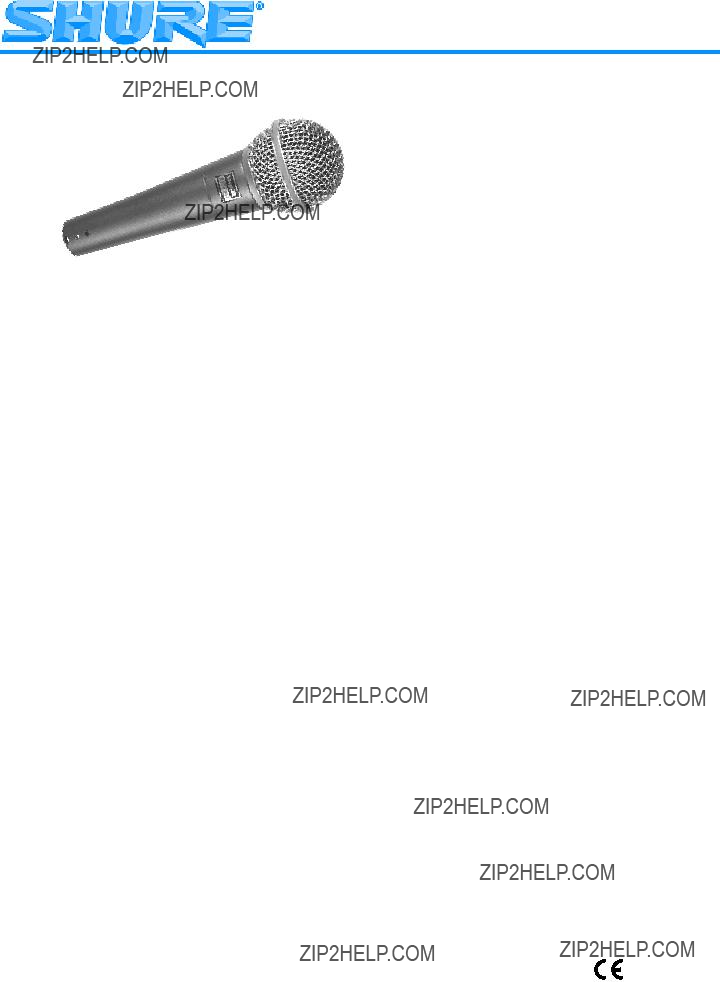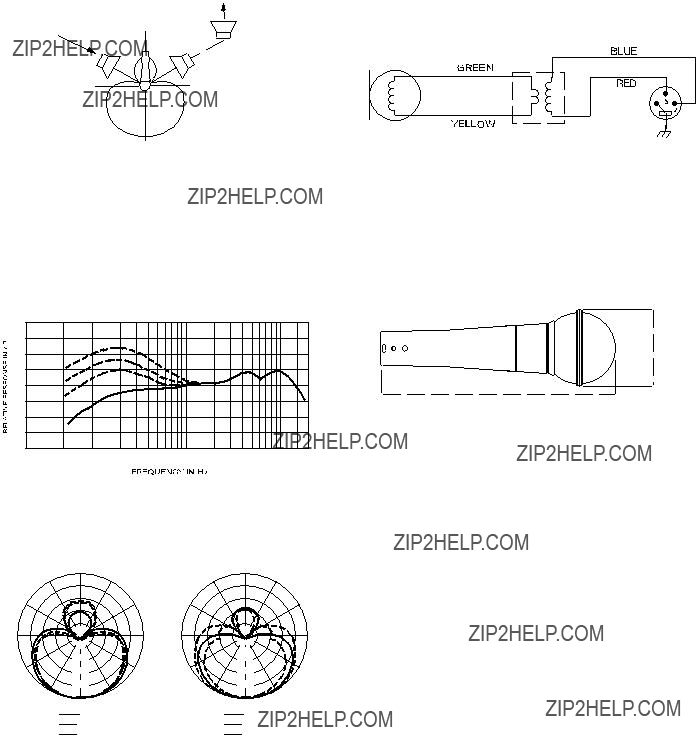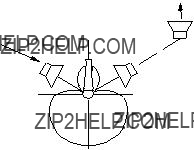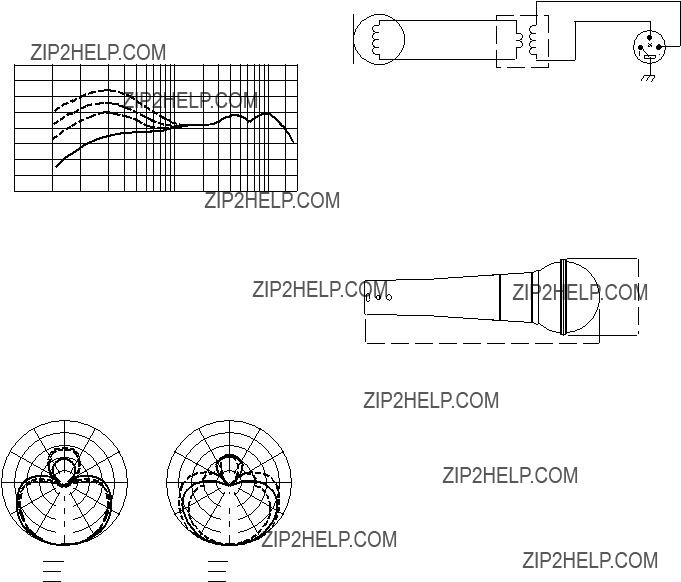MODELLO BETA 58AR
MICROFONO VOCALE DINAMICO
A SUPERCARDIOIDE
INTRODUZIONE
Il modello BETA 58A della Shure ?? un microfono vocale dinamico a supercardioide ad uscita elevata, realizzato per applicazioni in studi di registrazione ed impianti di amplificazione professionali. La caratteristica di ricezione a supercardioide rimane invariata in tutto il campo di frequenza del microfono, assicurando cos?? un elevato guadagno a monte della retroazione, massimo isolamento acustico e minima colorazione dei toni fuori asse. L???andamento della risposta in frequenza del modello BETA 58A ?? ideale per applicazioni vocali in cui il microfono venga tenuto estremamente vicino alle labbra. Grazie alla sua costruzione robusta, al sistema comprovato di montaggio antivibrazione e alla griglia in acciaio temprato, un uso aggressivo del microfono non influisce sulle sue eccellenti prestazioni. Applicazioni tipiche del modello BETA 58A includono l???uso sia da parte di cantanti solisti che del coro di accompagnamento.
Caratteristiche
SRisposta in frequenza ottimizzata per applicazioni vocali, con aumento della risposta ai toni intermedi e attenuazio- ne a quelli bassi.
SDiagramma di ricezione a supercardioide uniforme, che presenta un elevato guadagno a monte della retroazione ed una reiezione superiore dei suoni fuori asse.
SMagnete al neodimio, per ottenere un elevato rapporto segnale/rumore all???uscita.
SGriglia in acciaio temprato, resistente all???usura e agli abusi.
SAvanzato sistema di montaggio antivibrazione pneumati- co, che riduce al minimo la trasmissione di vibrazioni e suoni di natura meccanica.
SBassa sensibilit?? a variazioni dell???impedenza di carico.
SLe leggendarie qualit?? e affidabilit?? Shure.
APPLICAZIONI E COLLOCAZIONE
Il modello BETA 58A, realizzato per applicazioni vocali in cui il microfono si trovi estremamente vicino alle labbra, pu?? essere tenuto in mano o montato su un supporto. La tabella che segue riporta alcune delle pi?? comuni applicazioni e tecniche di collocazione. Ricordare sempre che le tecniche microfoniche dipendono largamente dalle preferenze personali e che non esiste un???unica posizione ???giusta??? del microfono.
REGOLE GENERALI PER L???USO DEL MICROFONO
1.Rivolgere il microfono verso la sorgente sonora desiderata e lontano da sorgenti indesiderate. Dato che i microfoni a supercardioide, come il modello BETA 58A, presentano diagrammi di ricezione stretti ed in grado di rilevare suoni provenienti dal retro, ci?? pu?? non essere ovvio n?? intuitivo.
2.Collocare il microfono quanto pi?? vicino possibile alla sor- gente sonora desiderata. Consultare la tabella precedente.
3.Per ottenere una maggiore risposta ai toni bassi, tenere il microfono vicino alle labbra.
4.Usare solo un microfono per ciascuna sorgente sonora da ricevere.
5.Mantenere la distanza tra pi?? microfoni ad un valore uguale ad almeno tre volte la distanza tra ciascuna sor- gente sonora ed il corrispondente microfono.
6.Usare il numero minimo di microfoni consentito dall???appli- cazione.
7.Collocare i microfoni quanto pi?? lontano possibile da su- perfici riflettenti.
8.Quando si usa un microfono all???aperto, utilizzare uno schermo paravento.
9.Evitare movimenti eccessivi del microfono, per ridurre al mi- nimo la ricezione di vibrazioni e suoni di natura meccanica.
10. Non coprire nessuna parte della griglia con la mano.
EFFETTO DI PROSSIMIT??
Nei microfoni unidirezionali, come il modello BETA 58A, la risposta alle basse frequenze aumenta progressivamente da 6 a 10 dB a 100 Hz quando il microfono si trova ad una distanza di circa 6 mm dalla sorgente sonora. Questo fenomeno, noto come effetto di prossimit??, pu?? essere utilizzato per creare un suono pi?? potente e caldo. Per evitare suoni esplosivi a basse frequenze durante l???uso ravvicinato, la risposta del microfono ai toni bassi si attenua gradualmente. Ci?? consente un controllo maggiore ed ?? di ausilio nello sfruttare l???effetto di prossimit??.
COLLOCAZIONE DEGLI ALTOPARLANTI PER LA
DIFFUSIONE SONORA AL PUBBLICO E DI
CONTROLLO DEL PALCOSCENICO
Per ottenere la massima reiezione dei suoni indesiderati, collocare gli altoparlanti di controllo del palcoscenico o quelli dell???impianto per il pubblico ad un angolo di 60_ rispetto all???asse posteriore del microfono, non direttamente dietro di esso (vedi Figura 1). Prima della rappresentazione, controllare sempre l???allestimento del palcoscenico per verificare la collocazione ottimale del microfono e degli altoparlanti di controllo.
0??
COLLOCAZIONE SUGGERITA DEGLI ALTOPARLANTI
FIGURA 1









